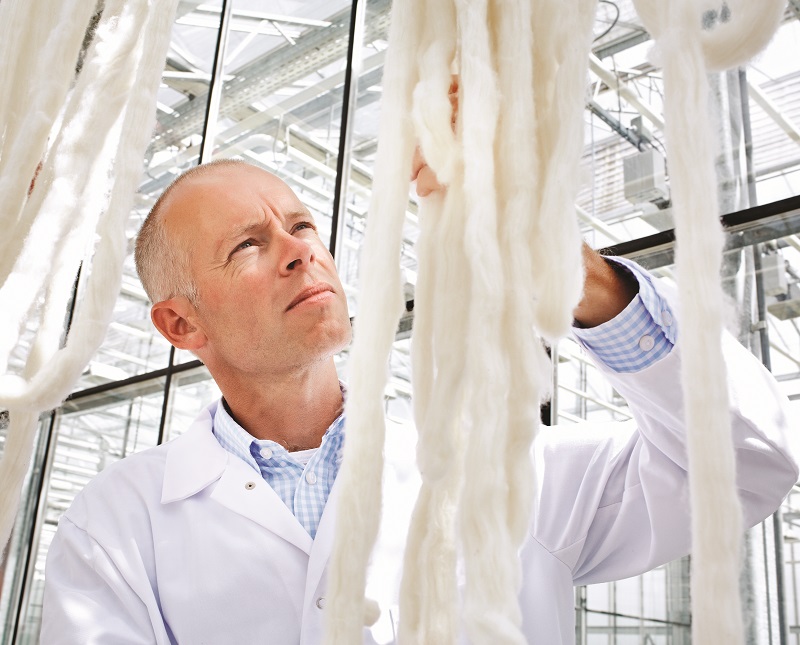Bacteria Are Revolutionizing Biotech--Here's Why We Need To Talk About It
This post was originally published on Forbes on March 22, 2016.
Post written by Catherine Feuillet. Catherine Feuillet is the head of trait research at Bayer.

Our Microbial World
Did you know that you have as many, if not more, bacteria living in your body than the number of cells you are made of? Did you know that a teaspoon of soil can contain between 100 million and 1 billion bacteria? There are far more bacteria on earth than there are stars in the universe.
In fact, bacteria impact every aspect of our lives. They are diverse and live nearly everywhere on earth, from the oceans’ depths to the highest mountains, in radioactive wastes and hot springs and our own microbiome. What’s more, bacteria have been genetically modified and used as living factories to produce a number of vaccines and pharmaceuticals, including insulin, the antiviral substance interferon, and blood‐clotting factors. They are widely used to produce vitamins, amino acids, enzymes, and growth supplements, as well as food that requires fermentation processes – yogurts and cheese, bread and beer.
In the past two decades, advances in genetics and genomics have increased our understanding of the diversity and role of bacteria in plant and animal lives. Large-scale research projects such as the Human and the Microbiome Projects and Tara Oceans are collecting and investigating bacterial samples from individual and global systems to better understand bacteria in these systems and integrate that knowledge into finding solutions to increase plant and animal health and preserve our environment.
Bacteria, a constant source of innovation in plant biotechnology
Bacteria also have been utilized to develop biotechnology tools by using our understanding of their way of living, infecting their hosts, or defending themselves against viruses.
So far, the richest source of innovation in plant biotech has been soil bacteria. For example, when plant scientists discovered that crown gall disease, which affects more than 140 plant species, is caused by a soil bacterium that can invade plant cells and insert genes causing tumors, they removed the tumor-inducing genes and replaced them with others to provide the plant with new characteristics. This is still one of the most widely used methods for transforming plants.
Other soil bacteria have evolved the capability to transform atmospheric nitrogen into ammonia that can be used by plants to grow. Scientists have discovered the genes responsible for nitrogen fixation from such bacteria and have incorporated them into plant cells to produce genetically modified crops that can now directly fix nitrogen from the atmosphere and grow more efficiently, while reducing the need for synthetic fertilizers. Additionally, other types of soil bacteria carry genes that produce natural insecticides. When inserted into plants, they provide protection against pests that destroy crop production every year.
Using bacterial systems for precision breeding
Over the past decade, efforts have been made to increase the precision of genome modification. Several techniques based on the possibility of precisely cutting DNA and using the intrinsic repair mechanisms to introduce modifications have been successfully deployed. Soybeans with an oil quality equivalent to canola, and potatoes that do not produce acrylamide, a toxic compound, when fried have been produced using such technologies.
But today, bacteria are again at the center of a new breakthrough with a novel technology called CRISPR/Cas that enables the precise modification of genomes in any organism. The CRISPR/Cas technology originates from a system that provides bacteria with adaptive immunity to viruses and plasmids. Like a vaccination, bacteria acquire immunity against pathogens by integrating into their genomes short fragments of the invading DNA. The next time the same virus attacks, its DNA is recognized, and through the production of a guiding RNA and a nuclease (Cas9), the virus is destroyed.
Scientists at UC Berkley and at the Broad Institute have used this knowledge to engineer a CRISPR/Cas system that can recognize any desired DNA sequences in a target genome, cut exactly at this sequence location, and either let the natural DNA repair mechanisms introduce mutations or provide a new DNA template to guide the repair and introduce new versions of a gene.
The first application that introduces mutations which modify or silence, gene expression, is the easiest to apply in plants. It has been used to knock out genes in many crop species (e.g., tomato, wheat and rice) and confer new characteristics such as resistance to diseases or improved food quality. The second application, which enables very precise gene modifications, is less easy to apply in crops and still too inefficient with current technologies. Regardless, we are at the dawn of a revolution in biotechnology. Modifications are so precise using the CRISPR/Cas technology that it will enable us to only modify what is needed in a genome to improve crops thereby becoming the most disruptive innovation in plant breeding in the history of agriculture.
Our Responsibility
Our next challenge, however, is not technological, but societal and philosophical. How will we explain the benefits of CRISPR/Cas, reassure the public about its application, and avoid the disastrous fate of genetically modified technologies?
We have a responsibility as scientists to take part in the conversation, listen to and understand public concerns, explain the potential applications, organize debates, and make decisions that will ensure societal acceptance and not hamper progress in or farmer access to these new technologies.
As a scientist who spent 20 years working on wheat improvement in academia before joining the biotech industry, I am committed to making a difference by applying science to benefit society. I am still fascinated by how much we can learn from our (microbial) environment to develop new solutions and convinced now, more than ever, that one of the keys to this vision is in scientific advancements, like genome editing with CRIPSR/Cas.